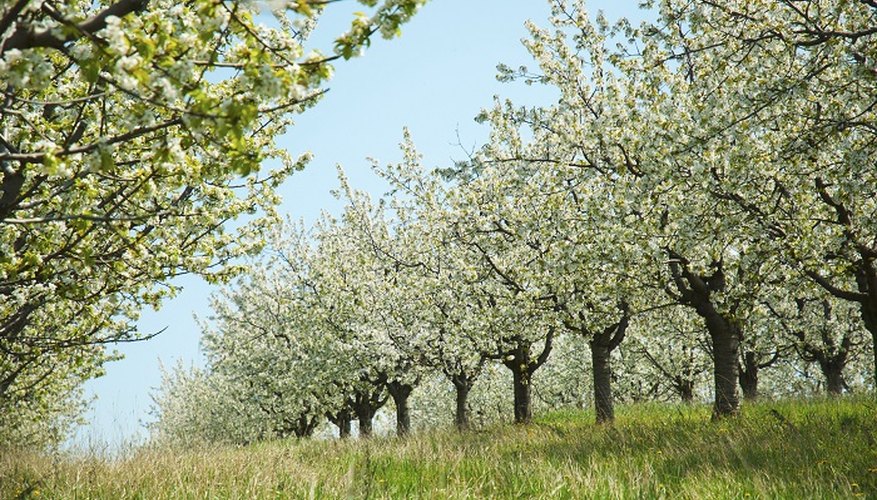Cherry is a stone fruit tree that produces showy blossoms and edible fruit in temperate climate conditions such as those found in the UK. There are several reasons for yellow leaves and leaf drop on a cherry tree. Early identification and control are vital for reducing damage and preventing fruit loss from these disorders.
Bacterial spot
Bacterial spot of cherry is a fungal disease caused by the bacterium Xanthomonas pruni that causes extensive foliar damage. The disease favours heavy rain, wind and wet weather conditions for infection and spread. Symptoms of bacterial spot consist of water-soaked leaf spots with a brown to black colour, leaf yellowing, numerous small holes on leaf surfaces and leaf drop. Infection can spread to the cherry fruit, causing dark brown spots and a sunken appearance. Maintain tree vigour with balanced fertiliser, avoid planting young trees near infected trees and avoid nitrogen-rich fertilisers to prevent and control the disease.
- Bacterial spot of cherry is a fungal disease caused by the bacterium Xanthomonas pruni that causes extensive foliar damage.
- Maintain tree vigour with balanced fertiliser, avoid planting young trees near infected trees and avoid nitrogen-rich fertilisers to prevent and control the disease.
Cherry leaf spot
Cherry tree leaf spot, caused by the fungus Blumeriella jappi, is a disease of cherry foliage and fruit. The fungus favours wet, humid conditions for infection and temperatures between 15C and 20C. Small purple to brown leaf spots, leaf yellowing, leaf drop and small holes where leaf spots initially formed identify cherry leaf spot on foliage. Defoliation causes reduced vigour, which can cause a loss of cherry fruit production during the growing season. Annual defoliation from cherry leaf spot can cause stunted growth and tree death. Destroy fallen infected leaves to reduce infection rates. However, chemical fungicides are an effective method of prevention and control for susceptible cherry species.
- Cherry tree leaf spot, caused by the fungus Blumeriella jappi, is a disease of cherry foliage and fruit.
- Defoliation causes reduced vigour, which can cause a loss of cherry fruit production during the growing season.
Peachtree borer
The peachtree borer, despite its namesake, is an insect pest of cherry, as well as peach and plum. Like other borer pests, the damage to the infested tree occurs from the larval stage of the insect. The adult peachtree borer is a small moth that lays eggs inside small openings in the boot of cherry trees. Once hatched, the larvae tunnel within the tree, causing girdling. Girdling restricts the phloem, which is the vascular system in a tree that transports sugars through photosynthesis to the tree's roots. Symptoms of peachtree borer infestation consist of leaf yellowing, leaf drop, leaf death and gum ooze around the base of the tree. Chemical pesticides are an effective method of control for destroying eggs before they hatch. However, for pesticides to remain effective, application must occur before the borer reaches the larval stage.
- The peachtree borer, despite its namesake, is an insect pest of cherry, as well as peach and plum.
Verticillium wilt
Verticillium wilt is a foliar disease of cherry, caused by the fungus Verticillium dahliae. The disease favours unhealthy or stressed trees, which occurs from excess irrigation, nitrogen-rich fertiliser and unnecessary pruning. Symptoms of infection consist of leaf yellowing in mid-June to mid-July, leaf drop and discoloured branches. The disease can spread to cherry from infected weeds, crops, or trees within the growing area. Increase tree vigour and control weeds to prevent infection. However, there is no chemical control for cherry infected with verticillium wit.
- Verticillium wilt is a foliar disease of cherry, caused by the fungus Verticillium dahliae.
- The disease favours unhealthy or stressed trees, which occurs from excess irrigation, nitrogen-rich fertiliser and unnecessary pruning.
